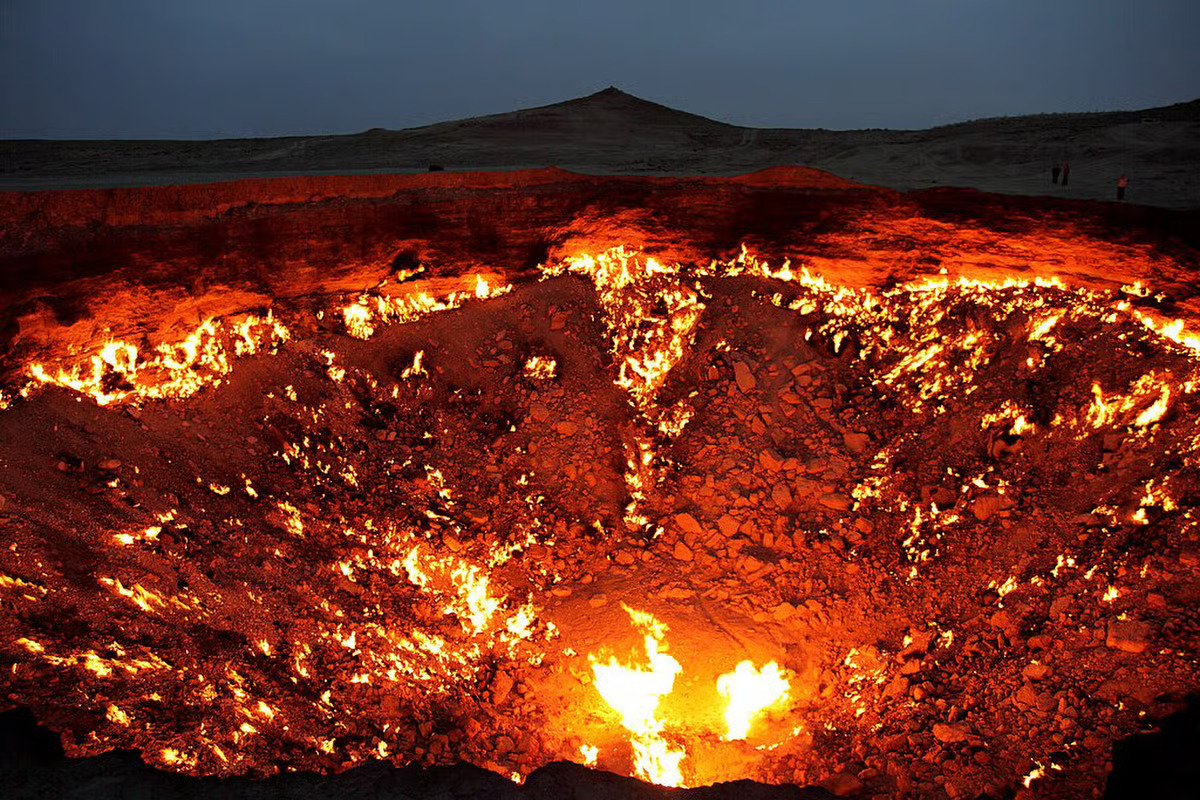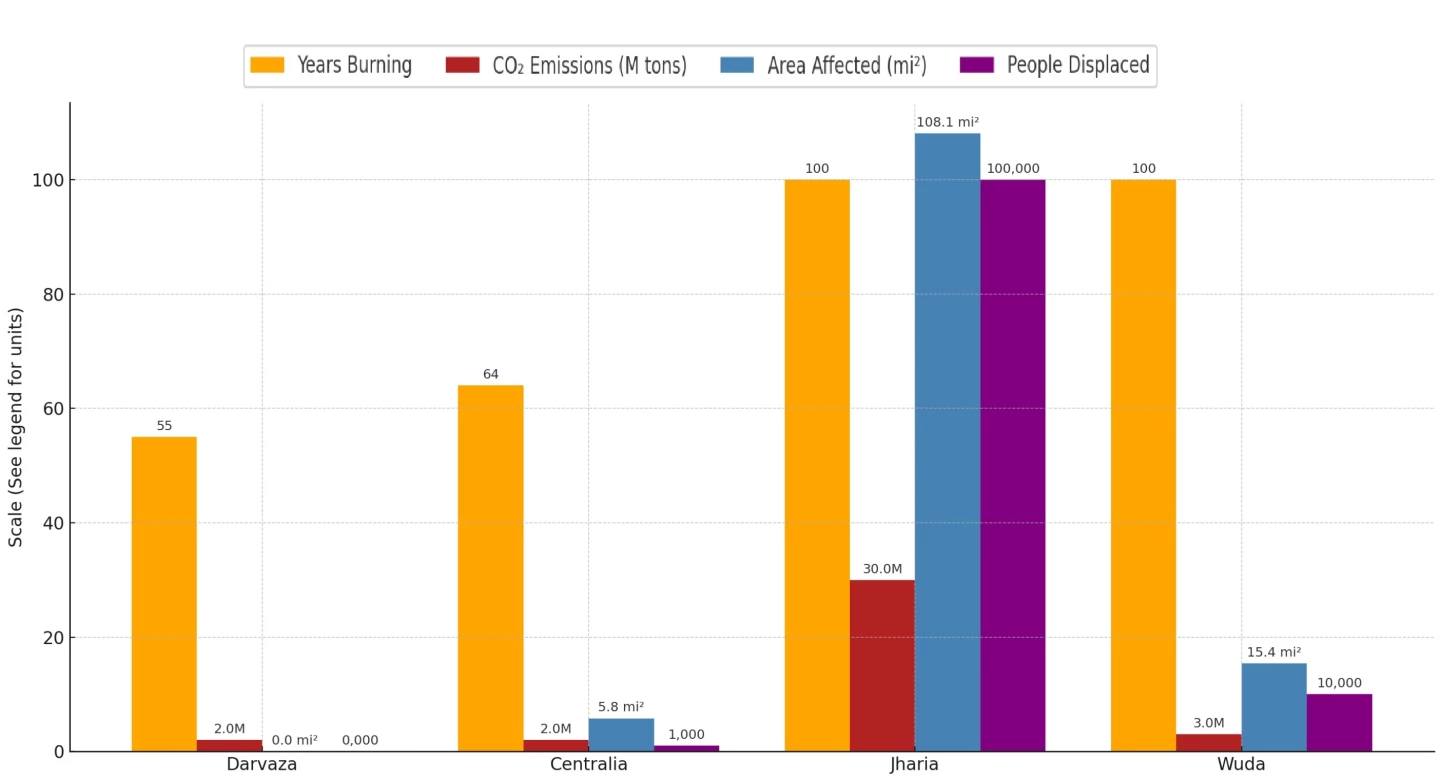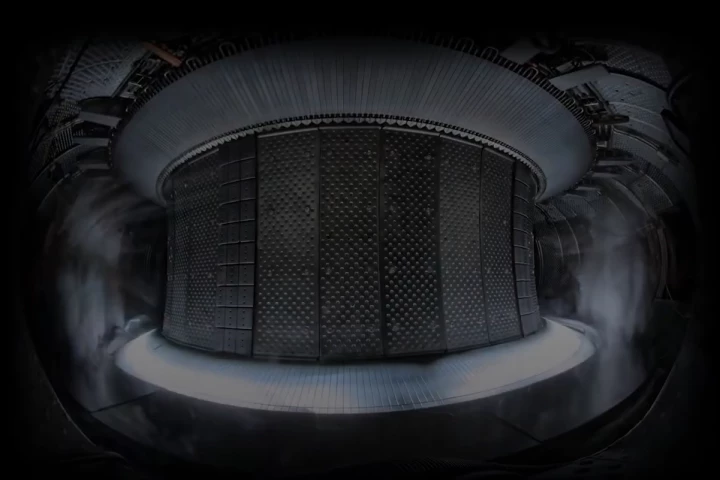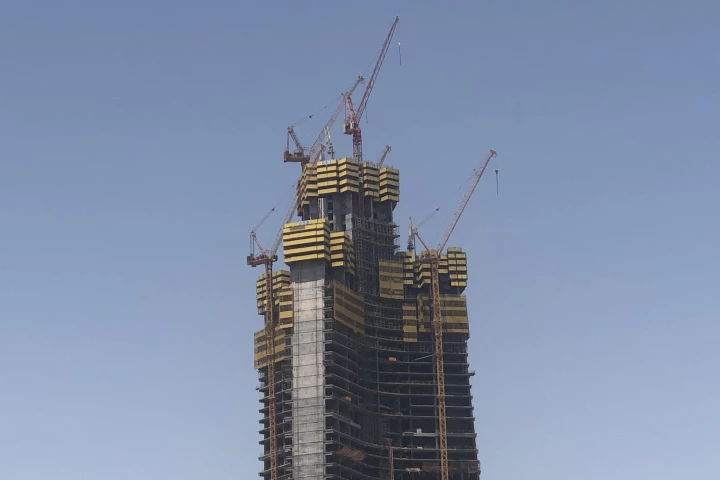 The Door to Hell burns furiously in the night sky. Wikimedia Commons/CC BY-SA 2.0 View 4 Images –
The Door to Hell burns furiously in the night sky. Wikimedia Commons/CC BY-SA 2.0 View 4 Images –
The Darvaza gas crater was believed to have been started in 1971 when a Soviet drilling rig punched through a natural gas pocket while drilling an exploratory well. To prevent the release of poisonous methane gas, they supposedly lit it on fire with the expectation that it would burn off in a few days.
- Fun fact: Turkmenistan has the fourth largest natural gas reserve in the world, containing about 9% of the planet’s known natural gas.
What they got instead was the apocalyptic birth of Turkmenistan’s most infamous tourist destination – officially named the Shining of Karakum – and the country’s top source of methane pollution from the 1,832°F (1,000°C), half-a-century-long, hellish gateway fire – that just might snuff out soon.

At its peak, the crater’s inferno lit up the night sky like a flaming beacon from miles away. Today, the flames are only faintly visible near the crater as the fires have been reduced threefold.
On June 5, at the International Scientific and Practical Conference “Environmental Aspects of the Implementation of Innovative Technologies in the Development of Hydrocarbon Deposits” (TESC 2025) conference in Ashgabat, scientists from Turkmengaz announced that the previously unstoppable fire pit is finally starting to die off.
Turkmengaz, the national gas company, has reopened previously mothballed wells near the crater and drilled several new wells to pump out methane feedstock before it can reach the crater.
Turkmenistan’s joint project with the United Nations Environment Program (UNEP) called Methane Alert and Response System (MARS) monitors methane emissions in real-time via satellite and has confirmed the results: the “Door” is closing.

In 2013, the crater’s flame intensity and temperatures were at its recorded peak. At the same time, renowned Canadian explorer, George Kourounis, became the first – and only – person to enter the crater wearing a full heat-reflective Kevlar/Nomex suit and a firefighter’s Self-Contained Breathing Apparatus (SCBA) to provide oxygen. He descended to the 752°F (400°C) crater floor and retrieved soil samples. Scientists later found extremophile bacteria living in the scorched earth samples Kourounis provided.
–
Though it’s been burning for over 50 years, the Darvaza gas crater is far from the longest burning “human error” fire to exist. In Centralia, Pennsylvania, an accidental trash fire ignited a coal seam in 1962 and experts expect it to burn for another 250-plus years. In Jharia, India, a 1916 or so underground coal seam fire prompted the evacuation of over 100 thousand people. It too is expected to burn for at least another 100 to 200 years.
[Editor’s Note: A coal seam fire, historically active on Marshall Mesa, south of Boulder, Colorado, has been burning for over 100 years.]
What really takes the cake, however, is Burning Mountain (Mount Wingen), Australia. Though not human-made, it is the longest known continuously burning fire on Earth at 6,000-plus years long. You guessed it, another coal seam fire, moving underground about 3.2 feet (1 meter) per year like never ending BBQ coals. The local Wanaruah people have spoken about the mountain smoking as far back as ancient times. And by studying the ash layers, rock discoloration, and heat-altered strata along the fire’s path, scientists say at least 6,000 years sounds about right.
Back in Turkmenistan …[for the balance of this exceptionally interesting article, please visit: https://newatlas.com/environment/darvaza-gas-crater-door-to-hell-closing/]
–
Source: Turkmengaz View gallery – 4 images
–
























